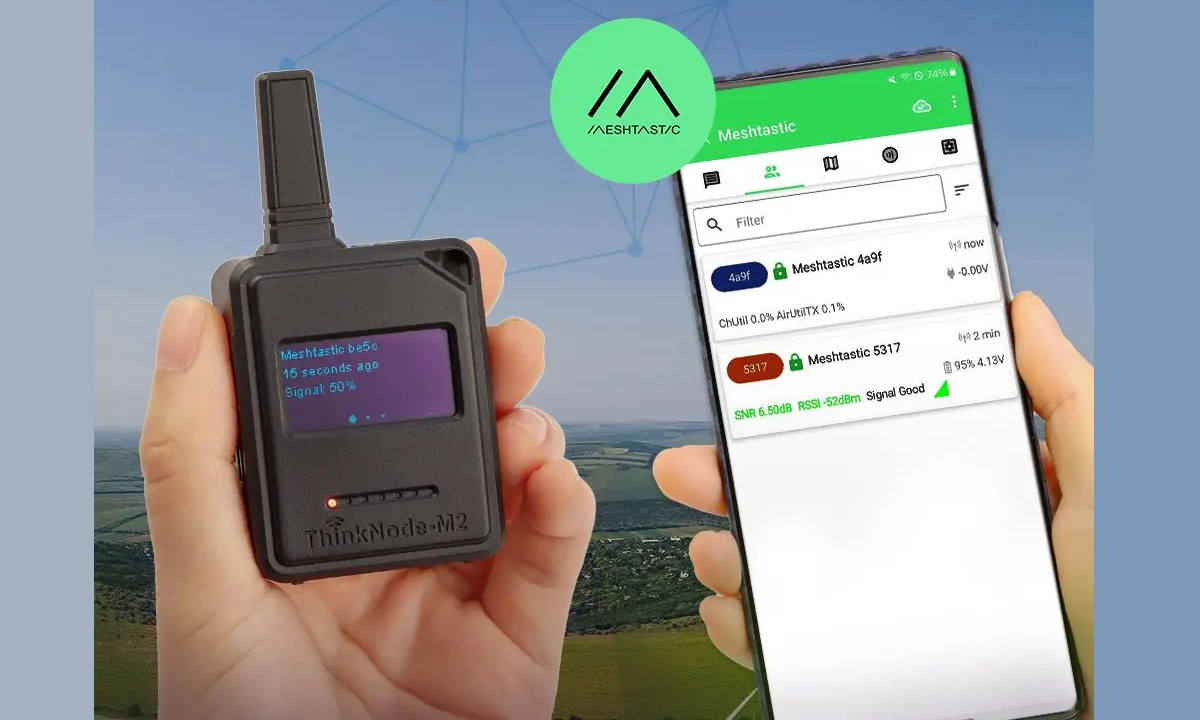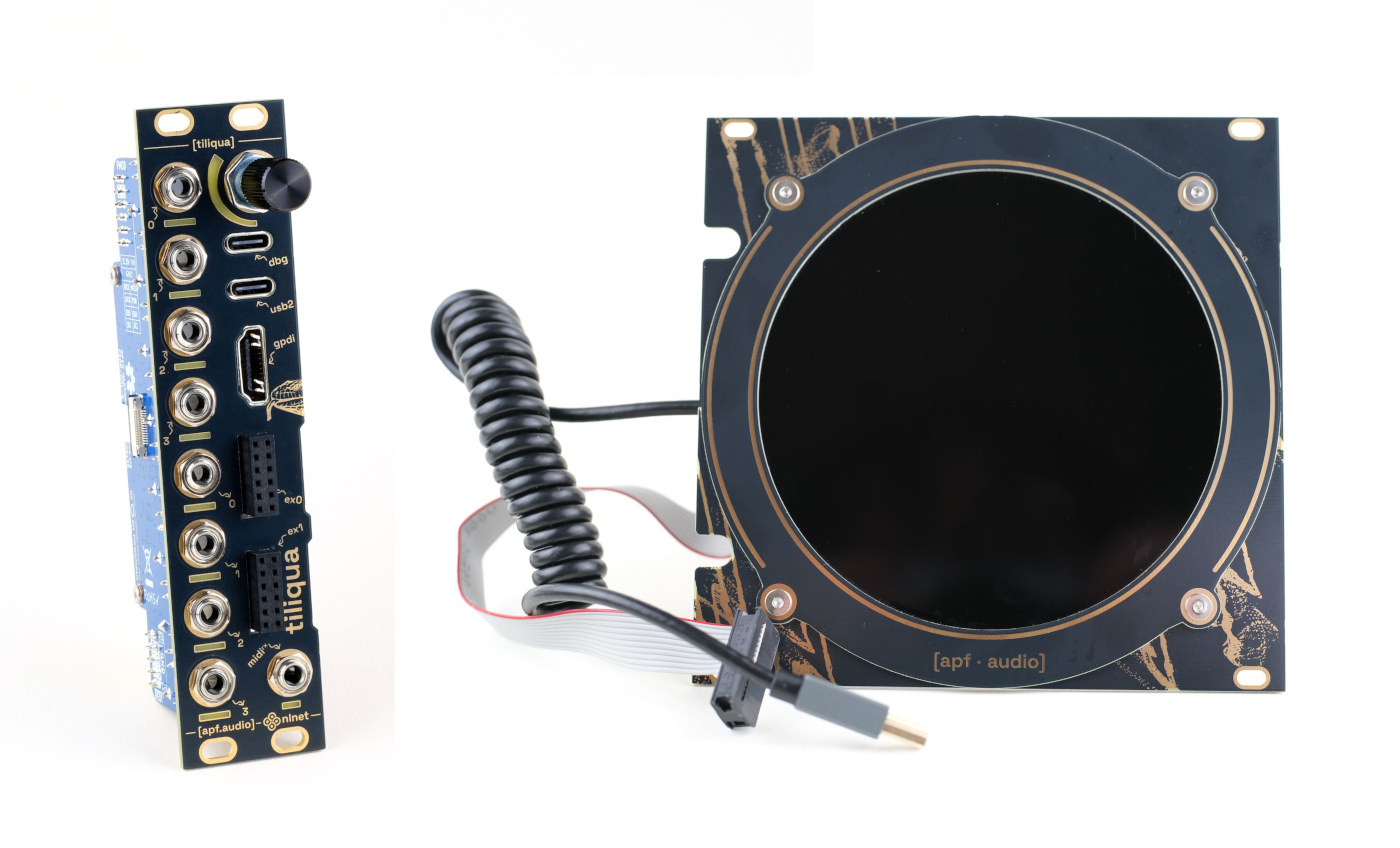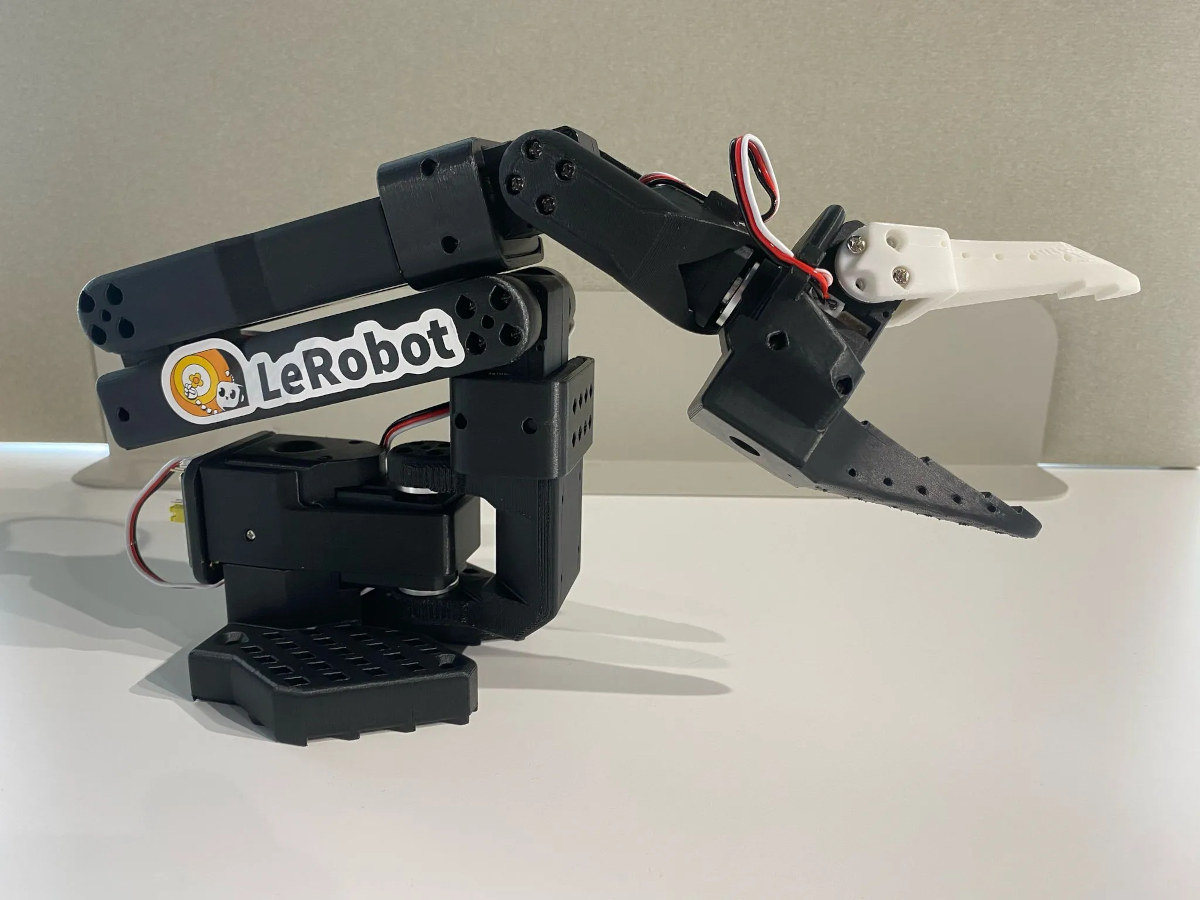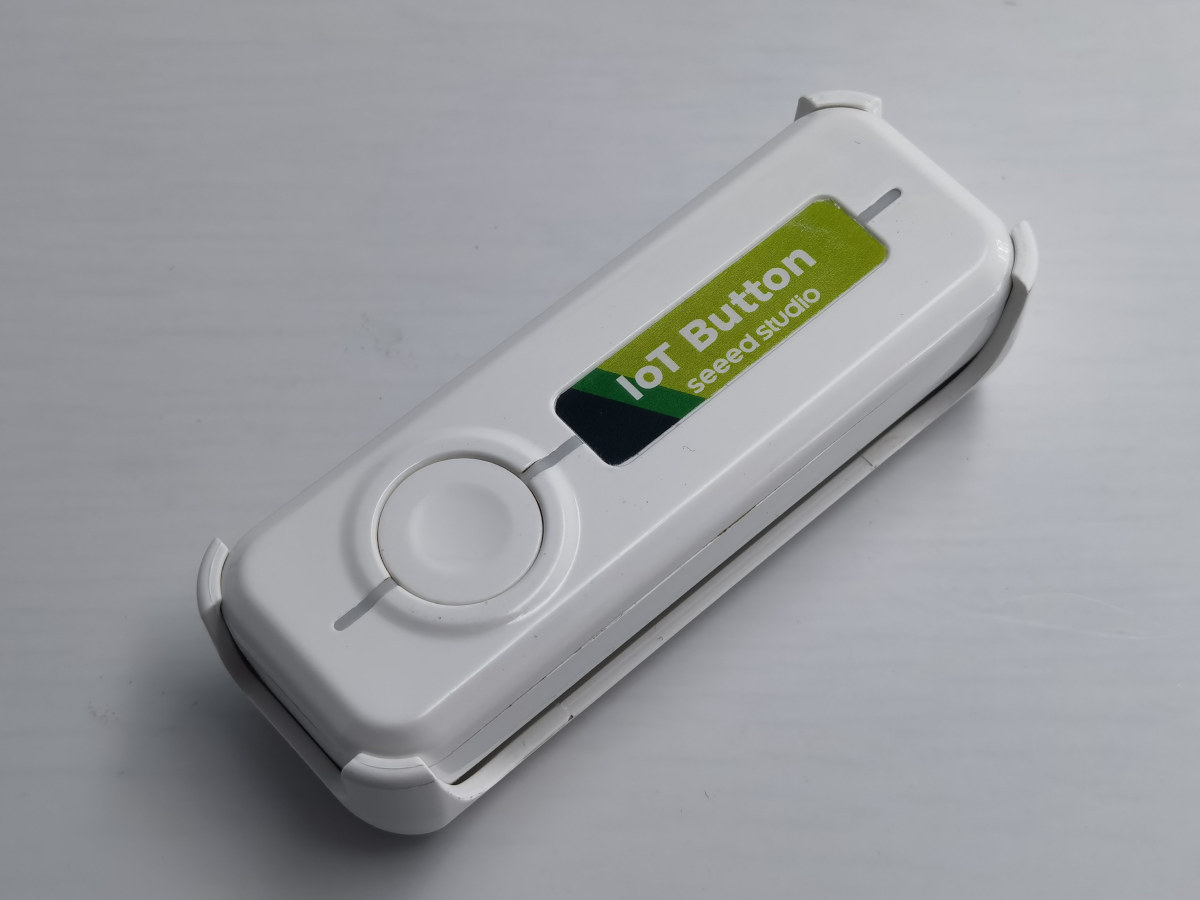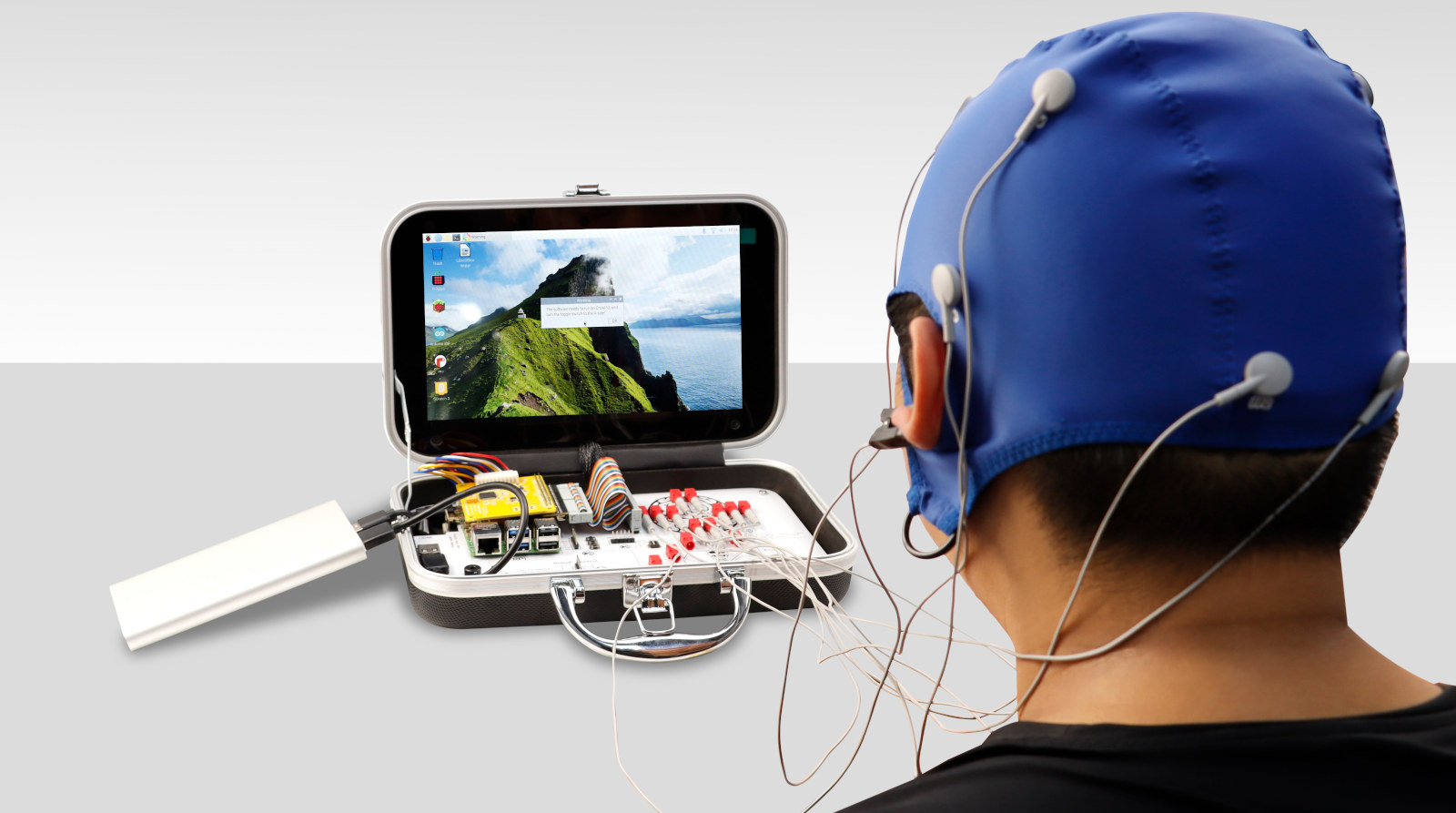Elecrow ThinkNode M2 is yet another Meshtastic handset for off-grid messaging and GPS coordinate sharing based on an ESP32-S3 module providing Bluetooth connectivity to a smartphone, and a Semtech SX1262 LoRa transceiver for low-power long-range wireless connectivity. It’s an evolution of the ThinkNode-M1, itself similar to the LILYGO T-Echo, based on a Nordic Semi nRF52840 Bluetooth module and SX1262 LoRa transceiver with an external antenna housed in a 3D printed enclosure. The new ThinkNode M2 is very similar but features a more powerful ESP32-S3 module instead, relies on a 1.3-inch OLED display instead of a 1.54-inch e-paper display, and is housed in an ABS plastic case. ThinkNode M2 specifications: Core module – ESP32-S3 module (looks to be ESP32-S3-WROOM-1 on the photo below) SoC – ESP32-S3 CPU – dual-core 32-bit microcontroller @ 240MHz Memory – 512KB SRAM, 8MB PSRAM Storage – 384KB ROM 4MB flash Wireless – 2.4GHz Wi-Fi and Bluetooth […]
Tiliqua – An hackable Lattice ECP5 FPGA-based audio multitool for Eurorack (Crowdfunding)
Tiliqua is a Lattice ECP5 FPGA multitool board designed for audio and visual synthesis and compatible with the Eurorack modular synthesizer format. The board features four audio input jacks and four audio output jacks, all of which can be used as touch-sensitive inputs when not connected. Other interfaces include a USB 2.0 Host/Device port, MIDI support, two PMOD expansion connectors, and a display interface to connect the Tiliqua screen for visual effects. All those features make it suitable for audio-rate modulation, low-latency effects, video synthesis, high-speed USB audio, or emulating retro hardware. Tiliqua specifications: FPGA – Lattice ECP5 (LFE5U-25F-6BG256) FPGA supported by the open-source FPGA flow System Memory – 32MB PSRAM (tested up to 200MHz DDR / 400MB/s) Storage 16MB SPI flash for the FPGA 16MB SPI flash for the Raspberry Pi RP2040 2Kbit I2C EEPROM: for storing calibration constants Video Output – Digital video GPDI (General Purpose Differential Interface) […]
SO-ARM101 open-source dual robotic arm kit works with Hugging Face’s LeRobot
SO-ARM101 “Arm Servo Motor Kit” is an open-source dual robotic arm kit that works with Hugging Face’s LeRobot robotics framework and is designed to interface with NVIDIA Jetson AI modules and computers. It is an update to the SO-ARM100 DIY open-source robotic arm kit introduced last year with LeRobot framework support. The new SO-ARM101 is still comprised of leader and follower arms but features improved wiring to prevent disconnection issues previously seen at joint 3, motors with optimized gear ratios, and a few functionality where the leader arm can now follow the follower arm in real-time, which will be used for reinforcement learning (RL) where a human can intervene and correct the robot’s actions. SO-ARM101 specifications: Degrees of Freedom (DOF) – 6 per Arm Motor control Total servo – 12x STS3215 bus servos (6x for each Arm) Leader Arm 1x (7.4V) 1:345 gear ratio motor for No.2 joints 2x (7.4V) […]
Air Lab is a portable Wi-Fi & Bluetooth LE air quality monitor with an e-paper touchscreen display (Crowdfunding)
Networked Artifacts’ Air Lab is a portable air quality monitor based on ESP32-S3 Wi-Fi & Bluetooth LE wireless SoC, equipped with an e-paper touchscreen display, and plenty of sensors to measure CO2, temperature, relative humidity, air pollutants (VOC, NOx), and atmospheric pressure. The Air Lab ships with a rechargeable 1,500 mAh battery that will be good for about 21 days on a charge in passive mode (taking measurements every minute), and you can also power it over its USB-C ports. It includes a debug port for people wanting to change the firmware, and a GPIO header to connect additional sensors if required. Data can be visualized on the e-paper display or transmitted over BLE or MQTT for integration with Home Assistant. The company also provides a CSV export function and a web-based dashboard for data visualization. Air Lab specifications: Main module – ESP32-S3 module with PCB antenna for 2.4GHz WiFi […]
ANAVI Miracle Emitter – A WiFi and BLE RGB LED controller compatible with Home Assistant, WLED firmware (Crowdfunding)
ANAVI Miracle Emitter is an open-source hardware ESP32-C3 WiFi and BLE controller designed to control 5V addressable RGB LED strips, which works with Home Assistant over MQTT and also supports the popular WLED firmware to easily control the LED strip through a web interface. It also features four I2C expansion headers for sensors and a small OLED display, a UART header, and a GPIO header. It’s an update to Leon ANAVI’s Miracle Controller introduced in 2019 with an ESP8266. A lot of things have changed since then, and it’s gotten easier than ever to control RGB LED strips using open-source software and firmware. ANAVI Miracle Emitter specifications: Wireless Module – Seeed Studio XIAO ESP32C3 Wireless MCU – Espressif Systems ESP32-C3 single-core RISC-V microcontroller @ 160 MHz with 400KB SRAM, 384KB ROM, 4MB flash, Wi-Fi 4 & Bluetooth LE 5.0 connectivity Antenna – External u.FL antenna USB – USB Type-C port […]
Avaota F1 – A tiny camera board based on Allwinner V821 RISC-V SoC with built-in WiFi and 64MB DDR2
The Avaota F1 is an ultra-small, open-source hardware Linux SBC powered by an Allwinner V821 32-bit RISC-V camera SoC with 64MB on-chip DDR2 and built-in 2.4 GHz WiFi 4, and designed for camera applications with a MIPI CSI connector. The 35×22 mm board also features a 32MB NOR flash, an analog microphone, a USB-C port for power, data, and programming, two 15-pin GPIO headers, a FEL button, and a user LED. It looks like it will be offered as a development kit with a 1080p30 camera and a 3.5-inch or 1.54-inch SPI display. I also think it’s the first time I’ve seen a Linux-capable application processor with built-in WiFi. Avaota F1 specifications SoC – Allwinner V821L2-WXX CPU 32-bit RISC-V CPU @ 1.2GHz with 16KB L1 D/I cache, 128KB L2 cache 32-bit RISC-V MCU @ 600 MHz with 16KB L1 I-cache, 8KB L1 D-cache Memory – 64MB DDR2 on-chip VPU – […]
Battery-powered Seeed Studio IoT Button features ESP32-C6 SoC, supports ESPHome or Zigbee firmware
Seeed Studio IoT Button is an inexpensive ESP32-C6 button powered by a rechargeable 18650 battery and designed to easily and quickly control Smart Home devices over WiFi 6 or Zigbee wireless protocol. It will be especially handy to Home Assistant users since the device is pre-flashed with ESPHome firmware for easy integration (over WiFi), and the company also provides a Zigbee firmware for Zigbee Home Assistant (ZHA) integration. The hardware is pretty basic with a button, three LEDs, and a USB-C port for charging the replaceable 18650 battery. Seeed Studio IoT Button specifications: SoC – ESP32-C6FH4 CPU Single-core 32-bit RISC-V clocked up to 160 MHz Low-power RISC-V core @ up to 20 MHz Memory – 512KB SRAM, 16KB low-power SRAM Storage – 320KB ROM, 4MB flash Wireless – 2.4 GHz WiFi 6, Bluetooth 5.0 LE/Mesh (somehow not used here), 802.15.4 radio for Zigbee 3.0 and Thread. Matter compatible. USB – […]
PiEEG kit – A Raspberry Pi 5-based bioscience lab in a suitcase (Crowdfunding)
Yesterday we wrote about using quantum sensors for brain-computer interfaces (BCI) and other biomedical applications. But that’s the future, and if you want to experiment with brain-computer interface technology and bioscience, the PiEEG kit has everything you need to get started, with all components fitting in a suitcase easy to carry around between your home and university or school. The bioscience home lab is based on the PIEEG Shield for Raspberry Pi introduced in 2023, and features a Raspberry Pi 5 8GB, a 9-inch display, a sensor board, EEG electrodes and cables for brainwave measurement, and electrodes for EMG (muscles), EKG (heart), and EOG (eye) signal recording. The PiEEG kit is comprised of the two main custom boards with the following specifications/features: PiEEG Shield on top of the Raspberry Pi 5 ADC – Texas Instruments ADS1299 Analog-to-Digital Converter for biopotential measurements Host interface – 40-pin GPIO header with SPI protocol […]


